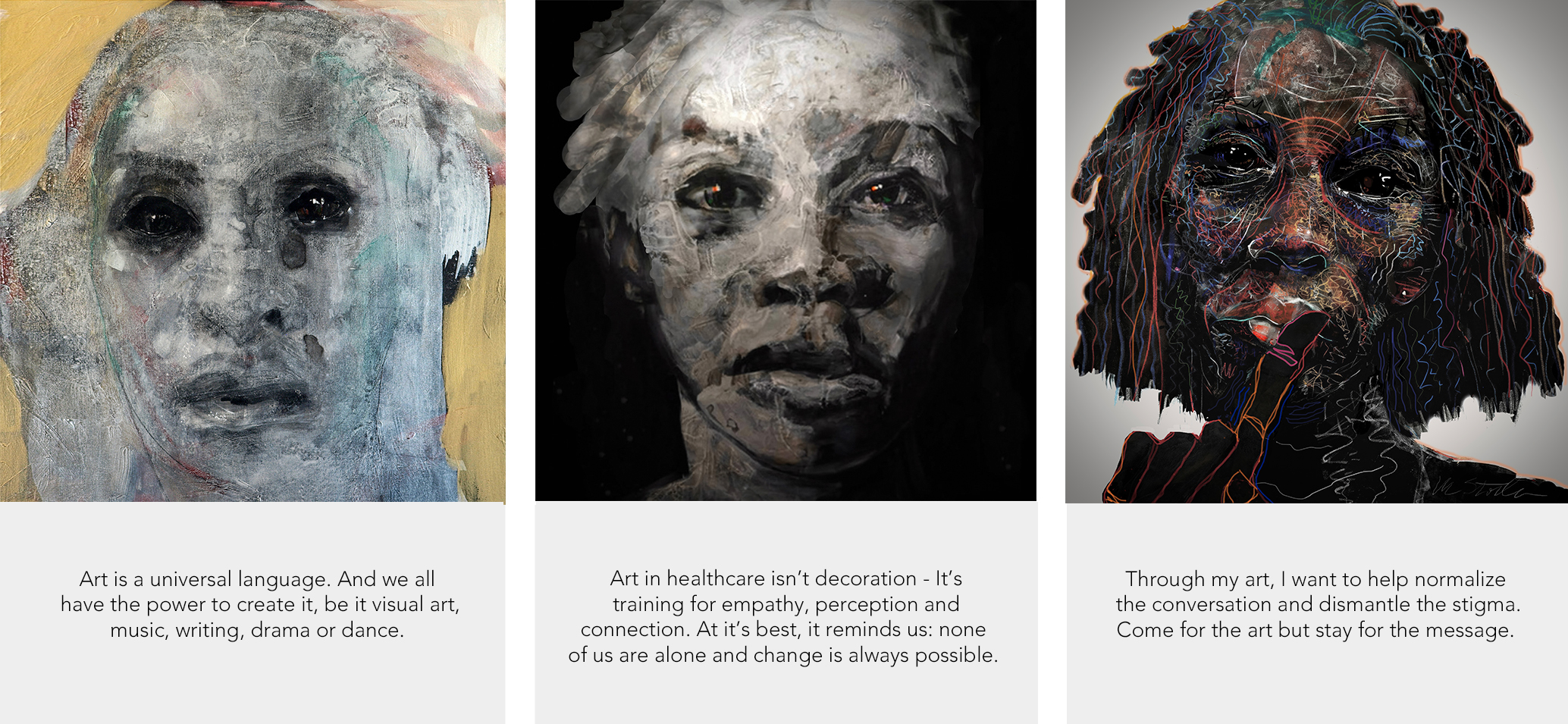Takeaway
My portraits of grief, resilience, and dignity, foster empathy and dialogue—reminding us that hope and compassion are vital to medicine and community.
Creative Arts in Medicine | October 6, 2025 | 1 min read
By William Stoehr, artist, Boulder, Colorado
You are someone else’s hope. Hope isn’t abstract—it’s the belief that change is possible, that even in the darkest moments there’s a way forward.
For me, bridging visual arts and healthcare means using art as a platform for self-reflection, dialogue, connection, and healing. It’s about creating spaces where patients, clinicians, families, and communities come together, find common ground, and realize they aren’t alone. Art becomes a shared experience—one that links science and medicine with human experience, and clinical practice with empathy. And then there is hope.
My paintings are more than images on canvas—they’re mirrors of our shared humanity: pain, resilience, hope, and dignity. They invite you to pause, reflect, and reconnect with the heart of medicine—to feel the weight of stigma, the struggle of substance use disorder, and the courage of survival. At their center is empathy and the urgent call to break through the wall of stigma.
My sister died of an opioid overdose. She might still be alive were it not for prescription opioids and the stigma that silences discussion, blocks action and deepens suffering. Her loss is personal, but the crisis is shared.
The paintings invite clinicians, patients, families, and communities into conversations that traditional medical encounters often leave unsaid. They encourage reflection, reduce isolation, and open the door to compassion.
Art teaches skills that reach far beyond the canvas. By engaging with human stories of pain and resilience, art cultivates the ability to sit with emotions, listen deeply, and respond with compassion. Truly viewing art requires slowing down and being fully present. In medicine, this translates into mindful attention and better care.

Click here to read more about William Stoehr.
This piece expresses the views solely of the author. It does not necessarily represent the views of any organization, including Johns Hopkins Medicine.

